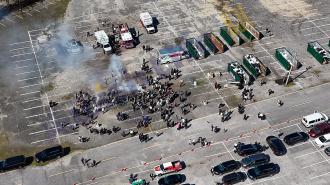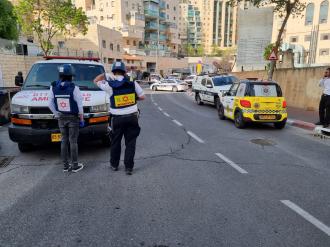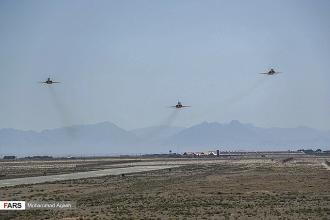In recent weeks, the Israel Defense Force’s Home Front Command has become a lot more precise when it comes to alerting civilians to rocket and missile attacks.
Instead of 255 alert areas, Israel has now been divided into 1,700 areas, meaning that the disruption caused by projectile alerts will be more localized than ever before.
“We are providing alerts only to those who are under substantial threat. We’re alerting civilians in a more focused manner, selecting the threatened area only for alerts,” Lt. Col. Shlomi Maman, head of the Alert Branch in the Home Front Command, told JNS.
The Home Front Command is responsible for alerting civilians to a range of threats, the most common of which is enemy projectile fire, but which also include natural disasters and hazardous chemical spills. It employs sirens, phone apps, television and radio to get its message across in time and save lives.
The breakthrough came when the Home Front Command moved from an analogue system to an IP-based digital system, giving every siren its own IP address and separate activation channel.
“If we distribute an alert to a very wide area, we create a number of problems. We’d lose public confidence. If every time a rocket is fired at Sderot I’d alert the whole of the Negev, or the entire Gaza border region, people would eventually lose confidence in the system,” stated Maman. “They’d give up and stop listening to the alerts. They’d conclude that it’s not relevant to them, and they’d start to become complacent.”
By being more accurate, the new targeted alerts not only ensure more willingness by civilians to heed the message and take cover, they also allow for many areas of the country not under threat to pursue routine activities, even during national emergencies.
Under the Home Front Command’s regulations, civilians must remain in secure zones for 10 minutes after an alert, due to the threat of shrapnel that can fall long after an initial rocket impact. This is particularly true in cases of interceptions of incoming projectiles by the Iron Dome air-defense system.
If large parts of the country, including hospitals, military industries and military bases, have to shut down for 10 minutes again and again, the net result would cause significant harm to the state’s ability to function and to national resilience, explained Maman.
Under such a scenario, “the country would have to spend most of the time that combat takes place in a protected area. The opposite scenario would be civilians who, during emergencies, continue to pursue routine activities as much as possible—business, education. They have a ‘contract’ with the state—when they are in danger, we will alert them,” he said.
The expansion of alert areas to 1,700 marks a milestone from 1991, when the whole of Israel formed a single alert area. Sirens nationwide went off every time Iraq fired Scud missiles at Israel. Iraq fired 39 missiles at Israel during the 1991 Gulf War.
The Home Front Command soon concluded that it needed to divide the country into more specific alert areas. One area turned into 10, and then, by 2006, 25. When the Second Lebanon War broke out that year, “every rocket flying from Lebanon flying to the Galilee resulted in an alert to the whole of the Galilee. Looking back, this reality was incomprehensible. Hence, we continued to divide new areas until we got to 255 in 2015,” recalled Maman.
Yet that number still meant that too many areas that were not under imminent rocket threat faced disruption, as was the case during the 50-day conflict with Hamas in Gaza in the summer of 2015.
“We see that rocket barrages are getting more intense,” said Maman. “Three weeks ago, we issued 850 alerts within just two days,” he said, referring to the latest escalation with Gazan terrorist factions. “It doesn’t take a security expert to know that if we throw in an additional front—the north—then this threat increases. So we saw that 255 areas were not enough. These areas were still too big.”
The breakthrough came when the Home Front Command moved from an analogue system to an IP-based digital system, giving every siren its own IP address and separate activation channel.
“Now we only activate the relevant areas. This is how we upgraded the number of alerts to an almost unlimited number,” he added.
A city like Rishon Letzion, with more than 240,000 inhabitants, has now been divided up into central neighborhoods, meaning that most of the city could continue as normal even if a rocket was heading towards it.
“We could divide cities into even more alert areas. But we did not want too many areas to avoid making the alerts too precise and informing the enemy about their firing,” said Maman.
In addition, the Home Front Command simplified its messaging, giving the alert areas clear names when it sends out messages through media, rather than the older and more confusing system that used numbers.
On June 10, hours after the new system went into effect, Palestinian terrorists fired projectiles at Israeli communities near Gaza in the late hours of the night. The result was that one kibbutz, Nirim, received an alert, while the adjacent Kibbutz Ein Hashlosha slept through the incident “as if nothing happened, even though the community next to them was in danger,” said Maman.
The Home Front Command is also preparing for other threats, such as earthquakes, in which civilians should do the opposite of what they do in rocket attacks and run outside.
Working with the Geophysical Institute of Israel, the Home Front Command is creating a network of 120 seismic sensors around the Syrian-African Fault Line that runs down the Jordan Valley. “As soon as they detect an earthquake, they can compute where it will cause an impact, and the Home Front Command hopes to distribute alerts accordingly,” said Maman.
The alerts will not be as selective as projectile attacks since an earthquake can influence half a country. The Home Front Command is creating a separate earthquake alert, in which speakers will omit a verbal earthquake announcement, rather than sounding the well-known rising and falling siren.
Depending on where they live, civilians could have between five to 15 seconds to vacate buildings, in a situation in which every second counts. That could still save hundreds or thousands of lives.
Fifteen seconds is a time period that should be familiar to civilians living near the Gaza border, as this is how long they have to take action when the rocket alert sounds. As Maman stated, “when people are trained, it saves lives.”















